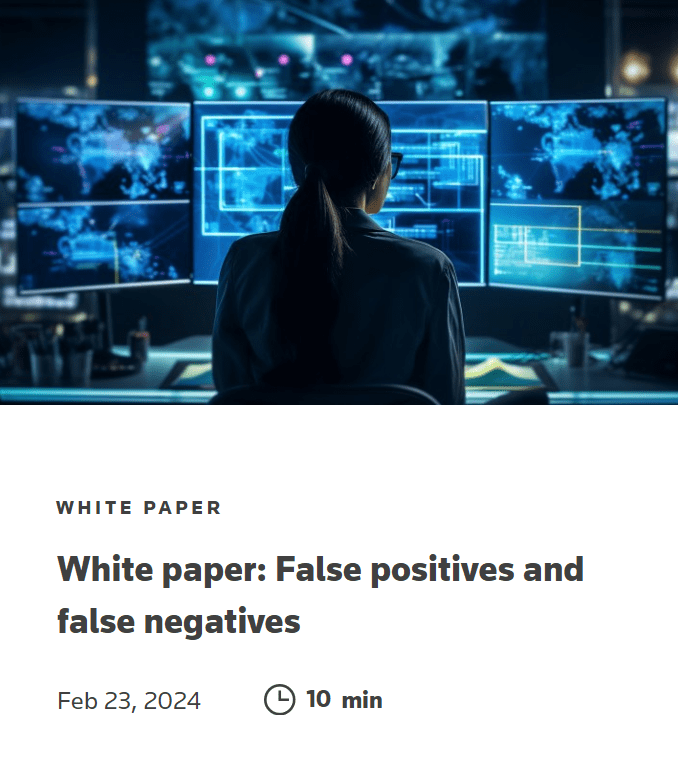The impact of false positives and false negatives on adverse media searches
Jump to:
| Searching for the proverbial needle |
| What the banks can be doing |
As financial institutions strive to find better methods to fight financial crime under the more intense eye of regulators, they often find their efforts hampered by problems in conducting adverse media searches.
These critical searches (sometimes called negative news search) allow financial institutions to use systematic search methods to find out any potentially damaging information about banking customers or any alliances they may have with criminal organizations or other illicit actors. Yet too often these vital searches — whether manually-driven though open-source search engines or aided by artificial intelligence-based systems — are hindered by the problem of too much information that surfaces in the form of false positives and false negatives, especially if older or legacy AI-based tools are used.
False positives are search engine matches that are delivered but once scrutinized by analysts, are found to be irrelevant to the query being made. As it stands now, most searches return a large percentage of false positives — sometimes as high as 90%. Conversely, false negatives are potentially relevant bits of information that are not caught by a financial institution’s current search methods.
 |
Searching for the proverbial needle
With important due diligence searches pulling up so much non-relevant information, it invokes the old saw of the haystack that contains a critical needle — but imagine hundreds of haystacks representing all the data that a typical adverse media searches brings up, and the one elusive needle being the single piece of information that may validate a search effort.
And while “better safe than sorry” attitudes among some managers may drive the over-cultivation of adverse media hits, each bundle of data that has to be examined and validated by institutions’ analysts represents more time and cost lost to that process.
Indeed, anti-money laundering specialists regard high levels of false positives as a sign of bank diligence weakness rather than strength; and an over-cultivating a trove of data that contains many false positives is a strategy that is likely to fail, often because these same imprecise processes also miss potentially vital false negatives that could properly inform banks’ decision-making in regard to doing business with certain customers.
False positives can never be completely eliminated — and shouldn’t be, because tightening screening thresholds may overlook real risk. However, it’s important that financial institutions understand the roots of their problems with false negatives and false positives.
First, legacy technology is a big part of the problem. These traditional systems within many institutions may rely on outdated matching processes and rules-based screenings that simply cannot keep pace with constantly evolving sanction lists and numerous changes to watch lists. These legacy tech solutions are inflexible and difficult to scale, delivering countless and costly false positives, and ultimately undermining financial institutions’ due diligence efforts.
Another problem is the quality of an institution’s data itself. Incomplete, inaccurate, and even inaccessible data can severely compromise the effectiveness of screening, further contributing to an overload of false positives while potentially missing an important false negative.
Worse yet, these two problems compound each other to hamper banks’ adverse media searches. Legacy systems make gathering accurate, up-to-date information from customers more difficult, and a poor data collection and curation systems leave institutions without the raw material they need to conduct proper due diligence.
What the banks can be doing
So, what should a financial institution’s search system contain in order to improve upon current practices and avoid the problems of false positives and false negatives?
Unfortunately, many financial institutions still use manual processes for adverse media screening even though there are many third-party solutions available that can leverage AI-based tools and automate this process. Such innovative process and tools can dramatically improve the reach of the screening effort and the quality of the results such searches surface.
At a minimum, any advance search tools should allow users to organize information along a number of factors, including highlighting relevance ratings and organizing events or items by chronology, region, and more. Further, these tools should also offer users a dashboard format that displays results with additional insights, such as why the item was flagged in the first place, along with customizable filters that will allow users to drill down deeper and winnow out large numbers of false positives.
Additionally, there are many third-party specialists in this area that not only can offer technology solutions, but also can add the expertise from which many financial institutions would greatly benefit, especially as institutions will need to up-skill and train their analysts with these new tools.
Ultimately, leveraging these types of advance search tools will allow financial institutions to move forward from the current open-source search engine results that many still employ and yet serve them so poorly. And by combining these new tools and processes with the use of skilled human analysis, institutions can see more streamlined sets of results that will help them address both the false positive and the false negative problem.
You can learn more about avoiding the issue of false positives and false negatives in your searches by leveraging innovative adverse media solutions for your business.
 |
Thomson Reuters is not a consumer reporting agency and none of its services or the data contained therein constitute a ‘consumer report’ as such term is defined in the Federal Fair Credit Reporting Act (FCRA), 15 U.S.C. sec. 1681 et seq. The data provided to you may not be used as a factor in consumer debt collection decisioning, establishing a consumer’s eligibility for credit, insurance, employment, government benefits, or housing, or for any other purpose authorized under the FCRA. By accessing one of our services, you agree not to use the service or data for any purpose authorized under the FCRA or in relation to taking an adverse action relating to a consumer application.








